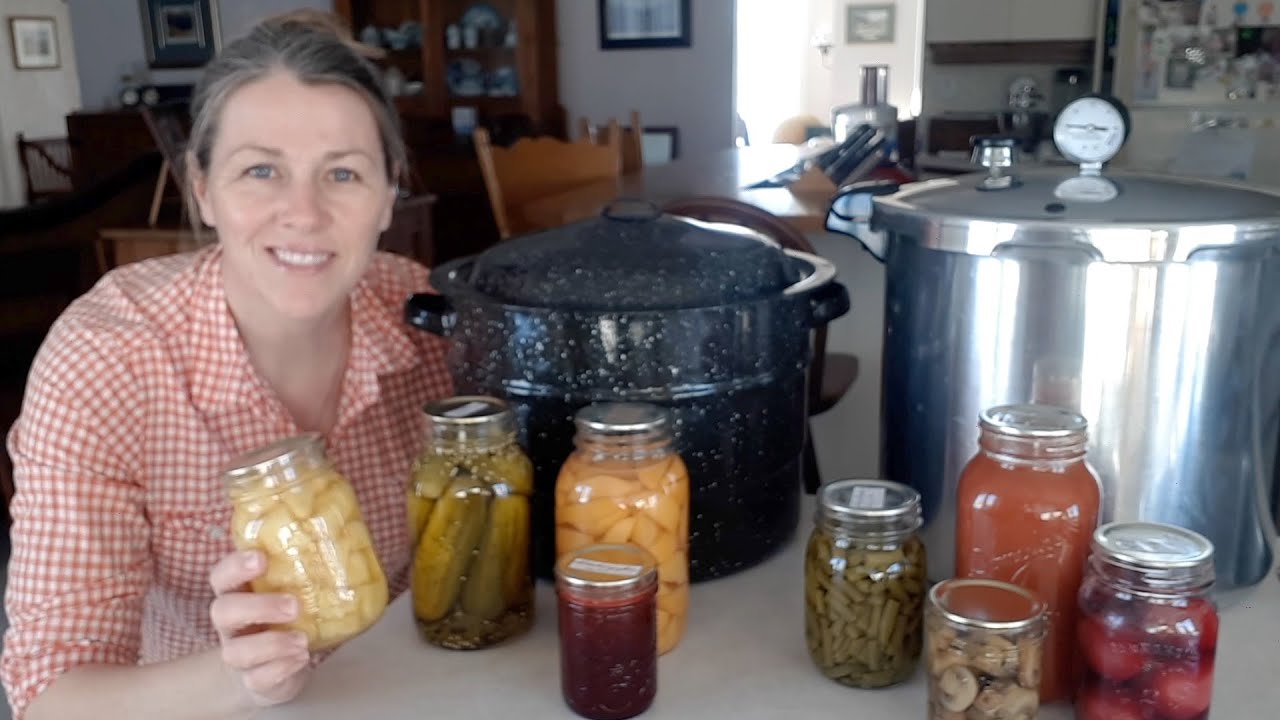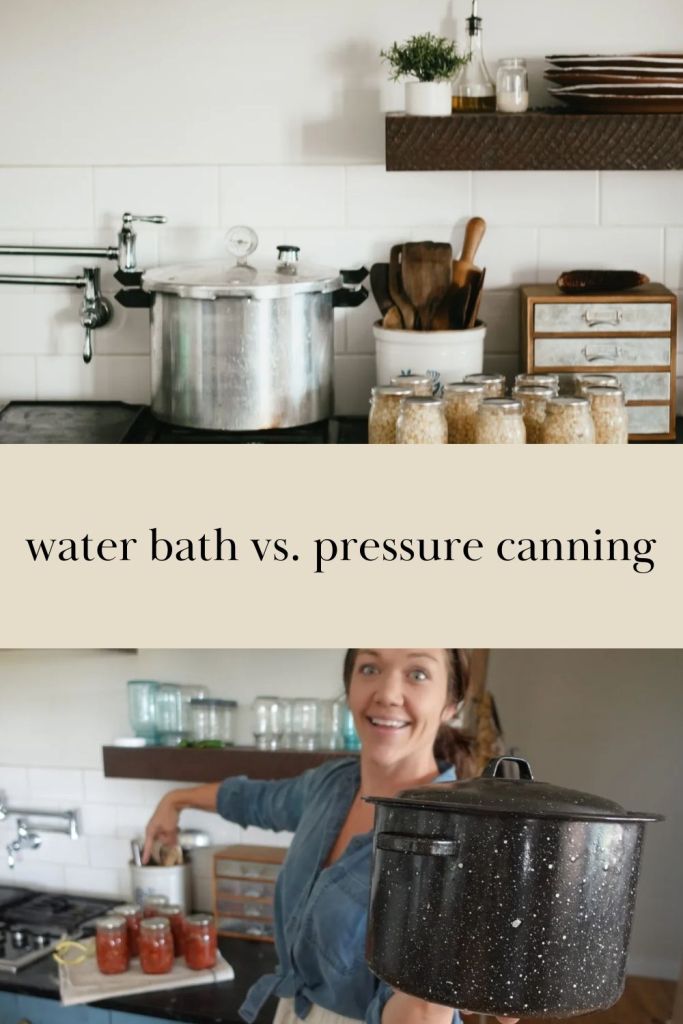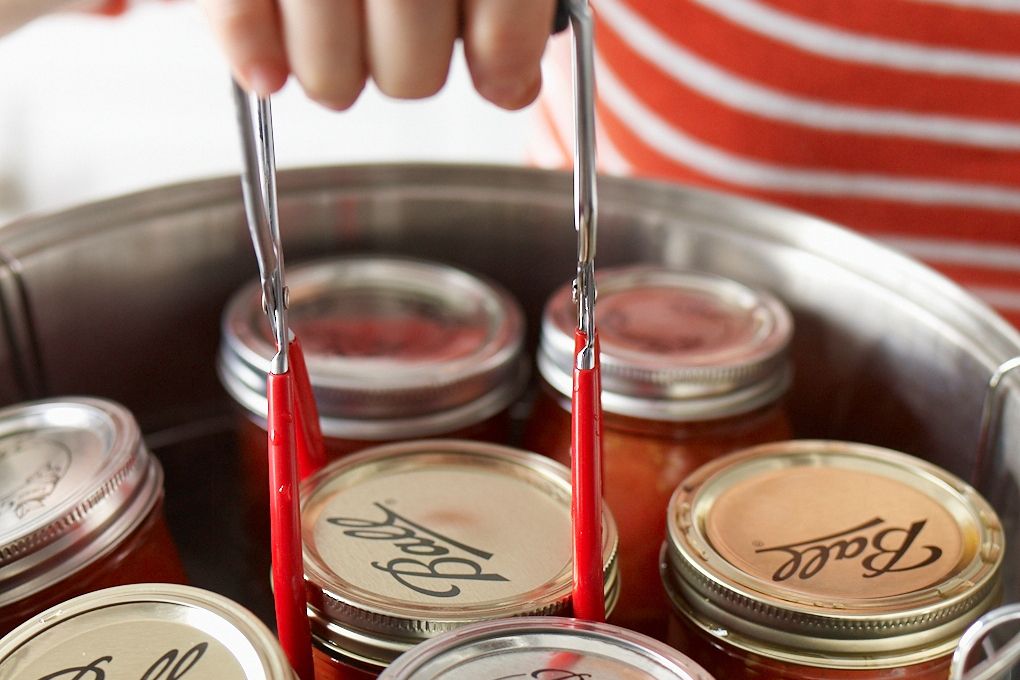
Introduction
Overview Of Water Bath Canning And Pressure Canning Techniques
Water Bath Canning and Pressure Canning are both popular methods for preserving food through canning. The main difference between these two techniques lies in the acidity of the food being canned. Water Bath Canning is typically used for foods with high acidity levels such as tomatoes, fruits, pickles, jams, jellies, and other preserves. On the other hand, Pressure Canning is used for low acid foods that require higher temperatures to ensure safe preservation.
When it comes to Water Bath Canning, the process involves submerging sealed jars of food in a large pot of boiling water for a specific period of time. The heat from the boiling water helps kill bacteria and microorganisms, effectively preserving the food. This method is ideal for high acid foods because the acidity helps prevent the growth of harmful bacteria.
In contrast, Pressure Canning uses a specialized pressure canner to achieve higher temperatures that are necessary for safely preserving low acid foods. The increased temperature ensures that all bacteria, including the harmful Clostridium botulinum bacteria, are destroyed, reducing the risk of foodborne illnesses.
Key Factors To Consider When Choosing A Canning Method
When deciding between Water Bath Canning and Pressure Canning, it is crucial to consider the acidity levels of the food you are canning. Here is a comparison of the key factors to consider when choosing a canning method:
| Factors | Water Bath Canning | Pressure Canning |
|---|---|---|
| Acidity of Food | High acidity foods such as tomatoes, fruits, and pickles | Low acid foods that require higher temperatures for preservation |
| Temperature | Lower temperatures achieved through boiling water | Higher temperatures achieved using a pressure canner |
| Bacteria Elimination | Effective against most bacteria but not Clostridium botulinum | Destroys all bacteria including Clostridium botulinum |
| Food Safety | Suitable for high acid foods only | Ensures safe preservation of low acid foods |
It’s important to choose the appropriate canning method based on the acidity levels of the food to ensure safe preservation and prevent the growth of harmful bacteria.
Water Bath Canning
Explanation Of Water Bath Canning
Water Bath Canning is a method commonly used for preserving high acid foods such as tomatoes, fruits, pickles, jams, and jellies through heat processing. The process involves submerging sealed jars of food in boiling water for a designated period. The high acidity in these foods helps prevent the growth of harmful bacteria, making water bath canning an effective preservation technique for such items.
Benefits And Limitations Of Water Bath Canning
One of the key benefits of water bath canning is its simplicity and accessibility, as it requires minimal equipment and expertise. Moreover, this method is suitable for preserving a variety of high acid foods commonly found in home kitchens. However, water bath canning is not suitable for low acid foods, as the lower temperatures achieved through boiling water may not be sufficient to eliminate all harmful bacteria, especially Clostridium botulinum.
Pressure Canning
Pressure Canning
Explanation Of Pressure Canning
Pressure Canning involves preserving low acid foods like vegetables, meats, poultry, and seafood by using high-pressure steam to achieve temperatures higher than boiling water. This method is essential for ensuring the destruction of harmful microorganisms such as Clostridium botulinum, which can thrive in low acid environments. By processing jars at elevated pressure levels, pressure canning effectively sterilizes the contents, making it safe for long-term storage.
Benefits And Limitations Of Pressure Canning
One of the primary advantages of pressure canning is its ability to safely preserve low acid foods that are not suitable for water bath canning. This method allows for the storage of a wider range of perishable items, providing households with the means to stock up on home-canned goods that are both nutritious and convenient. However, pressure canning requires specialized equipment, such as a pressure canner, which may be an initial investment for some home canners. Additionally, compared to water bath canning, pressure canning can be more time-consuming due to the need for higher processing temperatures and pressures.

Acidity And Food Types
Understanding The Role Of Acidity In Canning
Acidityplays a crucial role in determining the appropriate canning method for preserving foods. High-acid foods such as fruits, tomatoes, salsa, pickles, and sweet spreads can be safely canned using the water bath canning method. On the other hand, low-acid foods like vegetables, meats, poultry, and fish require the use of a pressure canner to ensure safe preservation. The level of acidity in the food directly impacts the risk of harmful bacterial growth and spoilage during the canning process.
Matching Canning Methods With High And Low Acid Foods
When it comes to preserving foods through canning, it is essential to match the canning method with the acidity of the food being processed. High acid foods can be effectively preserved using the boiling water canner or steam canner method. These methods rely on heat processing to kill bacteria and ensure food safety. Conversely, low acid foods must undergo pressure canning to reach the necessary high temperatures that can eliminate dangerous microorganisms. By understanding the acidity levels of different foods, home canners can confidently choose the appropriate canning technique to maintain the quality and safety of their preserved goods.
Safety Precautions
Importance Of Following Safety Guidelines In Canning
Canning is a method of food preservation that requires strict adherence to safety guidelines to prevent the growth of harmful bacteria and ensure the safety of the preserved foods. It is crucial for home canners to understand the importance of following recommended procedures to minimize the risk of foodborne illness. By prioritizing safety precautions, individuals can enjoy the benefits of homemade canned goods without compromising their health.
Proper Equipment And Procedures For Safe Canning
When engaging in the canning process, it is essential to use the appropriate equipment and follow the correct procedures to guarantee the safety of the preserved foods. For water bath canning, a large pot equipped with a lid and rack is necessary to submerge jars in boiling water. Alternatively, pressure canning requires a specialized pressure canner that can reach high temperatures to eliminate bacteria effectively. It is crucial to carefully follow the manufacturer’s instructions for both the equipment and the canning process to ensure the safe preservation of foods. By using the right tools and techniques, individuals can confidently engage in canning practices while upholding food safety standards.
Step-by-step Guide: Water Bath Canning
Detailed Instructions For Water Bath Canning Process
Water Bath Canning is a popular method for preserving food at home. To begin the process, ensure you have sterilized jars and lids ready. Fill a large pot with enough water to cover the jars by at least one inch. Place the filled jars on the rack in the pot, making sure they are not touching each other. Bring the water to a rolling boil and cover the pot with a lid. Process the jars for the recommended time according to the specific recipe you are following. Once done, turn off the heat and let the jars sit in the water for a few minutes before carefully removing them and allowing them to cool on a flat surface. The cooling process will create a vacuum seal, indicating successful preservation.
Tips For Successful Water Bath Canning
- Ensure all equipment is clean and in good condition before starting the canning process.- Use fresh ingredients and follow approved recipes to maintain the quality and safety of the preserved food.- Monitor the boiling water level during processing and adjust if needed to keep the jars submerged.- Allow the jars to cool naturally and avoid moving them until they are completely cooled to prevent breakage.- Label the sealed jars with the date and contents for easy identification in storage.
By following these steps and tips, individuals can confidently engage in water bath canning, preserving their favorite fruits, vegetables, jams, and pickles with safety and success.
Step-by-step Guide: Pressure Canning
Detailed Instructions For Pressure Canning Process
Pressure Canning involves processing canned foods under steam pressure to achieve higher temperatures and faster cooking times. To start, ensure your pressure canner is clean and in proper working condition. Fill the canner with the required amount of water as per the manufacturer’s instructions. Place the filled jars on the rack inside the canner, ensuring they are evenly spaced and not touching each other. Secure the lid tightly and allow steam to vent for 10 minutes before closing the vent. Bring the canner to the appropriate pressure based on the food being canned and altitude. Maintain this pressure for the specified time according to the recipe. Once done, turn off the heat and let the canner depressurize naturally before opening the lid. Carefully remove the jars and place them on a flat surface to cool.
Tips For Successful Pressure Canning
- Always start with clean and undamaged equipment to ensure safe canning.- Use only tested recipes from reliable sources to guarantee proper processing times and adequate acidity levels.- Monitor the pressure gauge regularly during canning and adjust heat as needed to maintain the correct pressure.- Allow the jars to cool naturally after processing to prevent breakage and ensure proper seals.- Label the sealed jars with contents and date to track freshness and identify items easily.
By following these guidelines and precautions, individuals can effectively utilize the pressure canning method to preserve a variety of low-acid foods safely and efficiently.

Comparison And Considerations
Contrasting Water Bath Canning And Pressure Canning Techniques
| Water Bath Canning | Pressure Canning |
|---|---|
| Suitable for high-acid foods like jams and pickles. | Ideal for low-acid foods like meats and vegetables. |
| Involves boiling filled jars in a large pot of water. | Requires a specialized pressure canner to process foods under steam pressure. |
| Relatively shorter processing times. | Achieves higher temperatures and longer processing times. |
| Simple and beginner-friendly method. | Requires more attention to detail and monitoring of pressure gauge. |
| Results in a vacuum seal suitable for high-acid foods. | Ensures the safety of low-acid foods by eliminating harmful bacteria. |
Factors To Consider When Deciding Between The Two Methods
- Acidity of the Food: Choose water bath canning for high-acid foods and pressure canning for low-acid foods.
- Processing Time: Water bath canning generally has shorter processing times compared to pressure canning.
- Equipment Needed: Water bath canning requires basic kitchen equipment, while pressure canning necessitates a specialized pressure canner.
- Safety Considerations: Pressure canning, with its higher temperatures and pressure, is essential for safely canning low-acid foods.
- Recipe Reliability: Ensure to use tested recipes from reputable sources to guarantee proper processing and safety.
In summary, the choice between water bath canning and pressure canning depends on the acidity of the food being preserved and the level of safety and detail required in the canning process. Both techniques serve their purpose well when used correctly and according to the specific food being canned.
Conclusion
Recap Of Key Points In Water Bath Canning Vs Pressure Canning
Water bath canning is suitable for high-acid foods like jams and pickles, involving boiling filled jars in water for shorter processing times and producing a vacuum seal. On the other hand, pressure canning is ideal for low-acid foods such as meats and vegetables, requiring a specialized pressure canner for higher temperatures and longer processing times to ensure safety by eliminating harmful bacteria.
Final Thoughts On Choosing The Right Method For Your Canning Needs
When deciding between water bath canning and pressure canning, it is crucial to consider the acidity of the food, processing time, equipment needed, safety considerations, and recipe reliability. Each method has its strengths and purposes, catering to the specific requirements of different types of foods. By understanding these factors and following tested recipes correctly, individuals can effectively preserve their foods using the appropriate canning technique.
FAQ About Water Bath Canning Vs Pressure Canning: Preserving Methods Discussed
Q: What is water bath canning?
A: Water bath canning is a method of preserving food by processing sealed jars in a large pot of boiling water for a specific amount of time.
Q: What is pressure canning?
A: Pressure canning is a method of preserving food by using a pressure canner, which allows for higher temperatures than water bath canning to kill bacteria and ensure safe preservation.
Q: When should I use water bath canning?
A: Water bath canning is suitable for high-acid foods like fruits, pickles, and jams as the acidity prevents the growth of harmful bacteria.
Q: When should I use pressure canning?
A: Pressure canning is necessary for low-acid foods such as vegetables, meats, and poultry, as they require higher temperatures to destroy spores of harmful bacteria like botulism.
Q: Can I interchange water bath canning and pressure canning?
A: It is vital to use the appropriate canning method based on the acidity of the food being preserved to ensure safe consumption. Do not interchange the methods unless recommended by a reliable source.
Q: Which method is faster?
A: Pressure canning is generally faster than water bath canning due to the higher temperatures achieved, which speeds up the preservation process for low-acid foods.

Gourmet Tiger, a culinary sensation, was established with a vision to delight taste buds and create unforgettable dining experiences. Specializing in cakes, casseroles, lunch, catering, and more, Gourmet Tiger has become a household name synonymous with exquisite flavors and impeccable service. Since its inception, Gourmet Tiger has been dedicated to crafting delectable treats and savory dishes that exceed expectations. Their commitment to using only the finest ingredients and innovative culinary techniques has set them apart as a leader in the food industry.